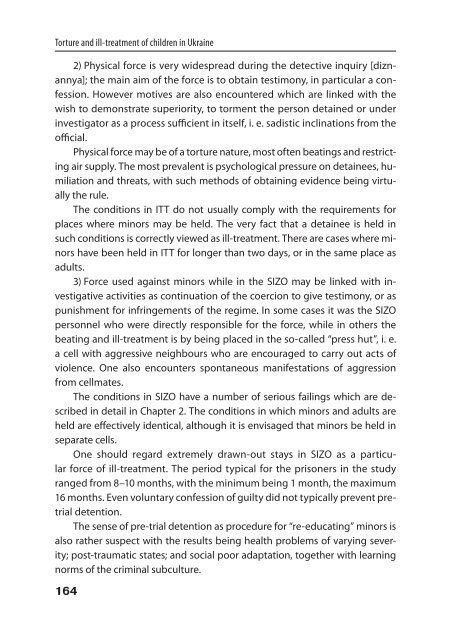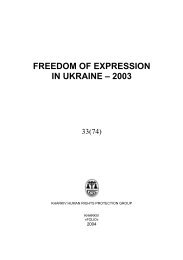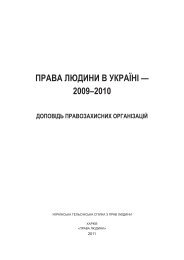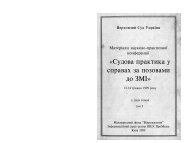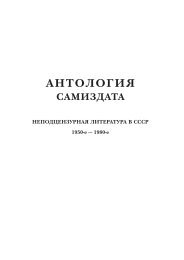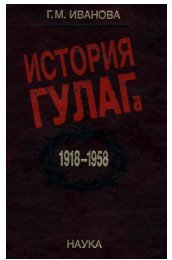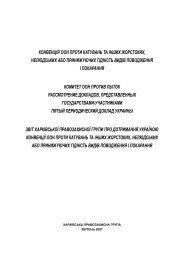TORTURE AND ILL-TREATMENT OF CHILDREN IN UKRAINE
TORTURE AND ILL-TREATMENT OF CHILDREN IN UKRAINE
TORTURE AND ILL-TREATMENT OF CHILDREN IN UKRAINE
- No tags were found...
Create successful ePaper yourself
Turn your PDF publications into a flip-book with our unique Google optimized e-Paper software.
Torture and ill-treatment of children in Ukraine2) Physical force is very widespread during the detective inquiry [diznannya];the main aim of the force is to obtain testimony, in particular a confession.However motives are also encountered which are linked with thewish to demonstrate superiority, to torment the person detained or underinvestigator as a process sufficient in itself, i. e. sadistic inclinations from theofficial.Physical force may be of a torture nature, most often beatings and restrictingair supply. The most prevalent is psychological pressure on detainees, humiliationand threats, with such methods of obtaining evidence being virtuallythe rule.The conditions in ITT do not usually comply with the requirements forplaces where minors may be held. The very fact that a detainee is held insuch conditions is correctly viewed as ill-treatment. There are cases where minorshave been held in ITT for longer than two days, or in the same place asadults.3) Force used against minors while in the SIZO may be linked with investigativeactivities as continuation of the coercion to give testimony, or aspunishment for infringements of the regime. In some cases it was the SIZOpersonnel who were directly responsible for the force, while in others thebeating and ill-treatment is by being placed in the so-called “press hut”, i. e.a cell with aggressive neighbours who are encouraged to carry out acts ofviolence. One also encounters spontaneous manifestations of aggressionfrom cellmates.The conditions in SIZO have a number of serious failings which are describedin detail in Chapter 2. The conditions in which minors and adults areheld are effectively identical, although it is envisaged that minors be held inseparate cells.One should regard extremely drawn-out stays in SIZO as a particularforce of ill-treatment. The period typical for the prisoners in the studyranged from 8–10 months, with the minimum being 1 month, the maximum16 months. Even voluntary confession of guilty did not typically prevent pretrialdetention.The sense of pre-trial detention as procedure for “re-educating” minors isalso rather suspect with the results being health problems of varying severity;post-traumatic states; and social poor adaptation, together with learningnorms of the criminal subculture.164


